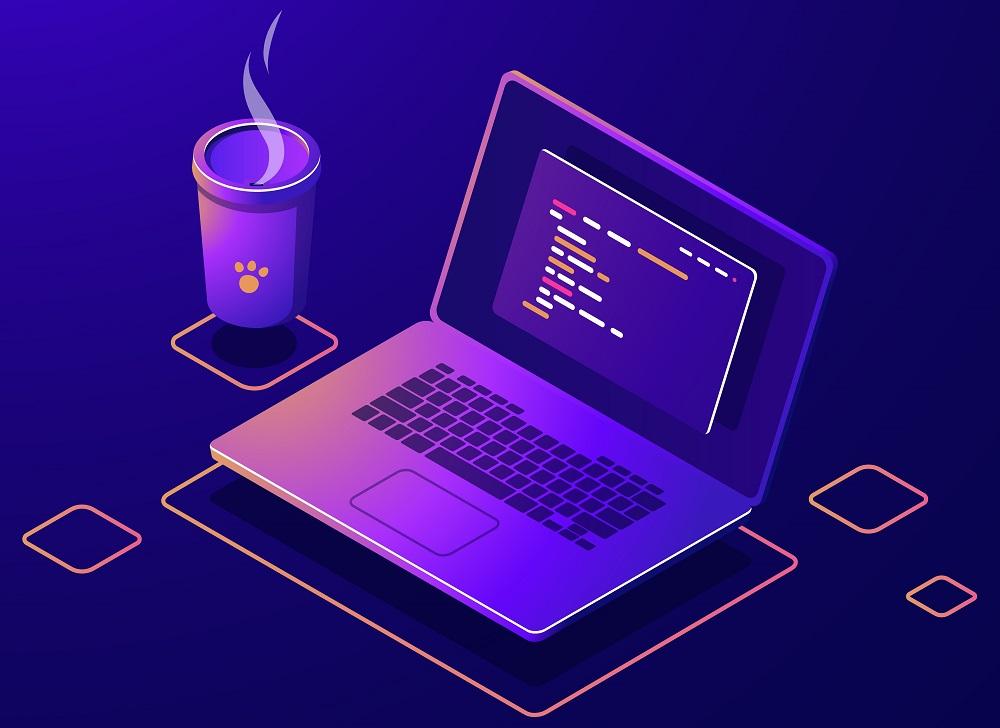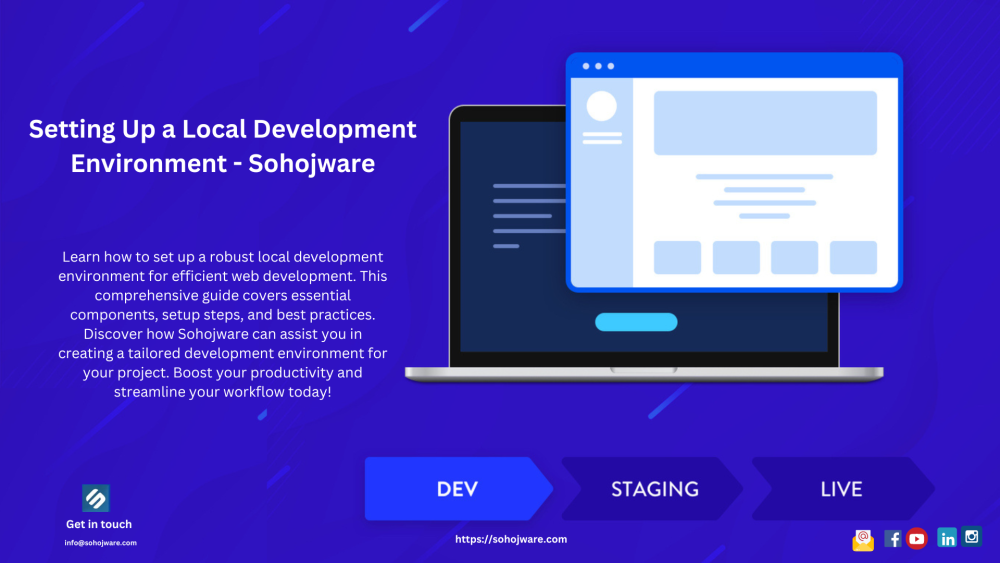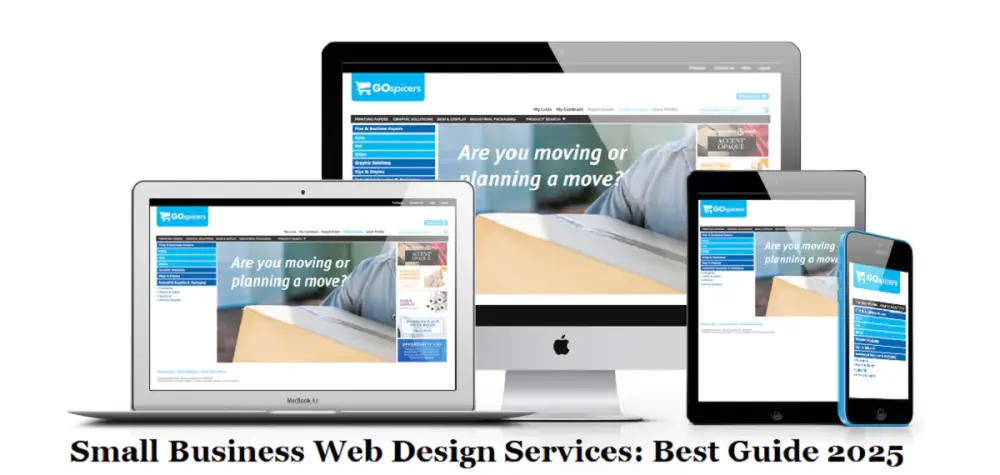The cornerstone of any successful web development project is a robust and well-configured local development environment (LDE). This self-contained ecosystem on your machine allows you to mimic a production server, enabling you to code, test, and debug your projects efficiently before deploying them live. Regardless of your skillset, having a strong understanding of how to set up a local development environment is crucial for a streamlined development workflow.
In this comprehensive guide by Sohojware, a leading software development company in Bangladesh, we'll delve into the essential steps to establish your local development environment. We'll equip you with the knowledge and tools to create a development playground tailored to your specific needs.
Benefits of a Local Development Environment
Before diving into the setup process, let's explore the compelling advantages of utilizing a local development environment:
-
Offline Development: A local development environment empowers you to work seamlessly even without an internet connection. This is particularly beneficial for situations where you have limited internet access or need to focus on coding uninterrupted.
-
Rapid Iteration and Testing: The isolated nature of a local development environment fosters a setting conducive to swift experimentation and testing. You can make code changes, preview them instantly, and identify potential issues without affecting the live version of your project. This significantly accelerates the development process and streamlines debugging efforts.
-
Customization and Control: A local development environment grants you complete control over the development stack. You can tailor the environment to your specific project requirements, ensuring compatibility with the necessary programming languages, frameworks, and libraries. This level of customization empowers you to work with the tools you're most comfortable with.
-
Security: Developing within a local development environment safeguards your code from unauthorized access. Since you're working on a standalone system, there's no risk of accidentally exposing sensitive information or code snippets on a public server.
Essential Components for a Local Development Environment

Now that you're familiar with the advantages of a local development environment, let's delve into the core components you'll need to set up your own:
-
Text Editor or IDE (Integrated Development Environment): This is where the magic happens – the platform where you'll write your code. Popular options include lightweight text editors like Sublime Text or Atom, or feature-rich IDEs like Visual Studio Code or WebStorm. These tools offer syntax highlighting, code completion, debugging functionalities, and project management capabilities, significantly enhancing your development experience.
-
Web Server: A web server mimics a production server environment on your local machine. It interprets and executes the code you write, allowing you to preview your web application within your local development environment. Popular choices include Apache, Nginx, or a combination of both, depending on your project's needs.
-
PHP (or Programming Language of Choice): PHP reigns supreme for server-side scripting in web development. However, the specific programming language you'll utilize depends on your project's nature. Sohojware's development team possesses expertise in various languages, including PHP, JavaScript, Python, and Java, ensuring we can cater to your project's specific requirements.
-
Database Management System (Optional): If your project necessitates storing and managing data, you'll need a database management system like MySQL, PostgreSQL, or SQLite. These systems provide a structured approach to data storage and retrieval, integral for dynamic web applications.
Setting Up Your Local Development Environment
The specific steps in setting up your local development environment will vary depending on your chosen tools and operating system. However, there's a general roadmap to guide you through the process:
-
Install a Text Editor or IDE: Download and install your preferred text editor or IDE. Familiarize yourself with its interface and explore the features it offers.
-
Install a Web Server: Follow the installation instructions for your chosen web server software. Ensure it's configured to run on your local machine.
-
Install PHP (or Programming Language of Choice): Download and install the necessary runtime environment for your chosen programming language.
-
Configure Your Environment (Optional): If you're using a database management system, install and configure it to work seamlessly with your web server and chosen programming language.
-
Test Your Environment: Create a simple PHP script (or a script in your chosen language) to test your setup. This script can output text to verify that your local development environment is functioning correctly.
Sohojware: Your Local Development Partner
Sohojware understands the significance of a well-established local development environment for efficient web development. Our team of skilled developers possesses the expertise to guide you through the setup process.
Whether you're a seasoned developer or just starting, we can assist you in creating a local development environment that aligns with your project's specific needs. From selecting the right tools to configuring them optimally, we're here to provide support and ensure a smooth development journey.
Additional Tips for a Productive Local Development Environment
To maximize your productivity and efficiency within your local development environment, consider the following tips:
-
Version Control: Implement a version control system like Git to track changes, collaborate with team members, and easily revert to previous versions of your code.
-
Debugging Tools: Leverage browser developer tools and debugging extensions to identify and resolve issues effectively.
-
Continuous Integration and Continuous Deployment (CI/CD): Integrate CI/CD pipelines to automate testing, building, and deployment processes, streamlining your workflow.
-
Performance Optimization: Regularly analyze your local development environment for performance bottlenecks and optimize accordingly to ensure responsiveness.
-
Regular Updates: Keep your development tools, programming languages, and frameworks up-to-date with the latest versions to benefit from new features and security enhancements.
FAQs
-
What is the best text editor or IDE for beginners?
The optimal choice depends on your preferences. Visual Studio Code is a popular option due to its extensive features, customization options, and large community support. However, if you prefer a simpler interface, Sublime Text or Atom could be suitable alternatives. Sohojware can recommend the best tool based on your specific needs.
-
How do I set up a local development environment for PHP projects?
To set up a local development environment for PHP projects, you'll need a text editor, a web server like Apache or Nginx, and PHP installed. Sohojware can provide detailed instructions and assistance tailored to your specific requirements.
-
Is it necessary to use a database for every web project?
While not all projects require a database, most dynamic web applications benefit from storing and managing data efficiently. Sohojware can help you determine whether a database is essential for your project and recommend suitable options.
-
How can I improve the performance of my local development environment?
Several strategies can enhance your local development environment's performance, including optimizing your web server configuration, utilizing caching mechanisms, and minimizing resource-intensive operations. Sohojware can offer specific recommendations based on your project's characteristics.
-
What is the difference between a local development environment and a staging environment?
A local development environment is a self-contained setup on your machine for development purposes, while a staging environment is a replica of the production environment used for testing and quality assurance before deployment. Sohojware can assist you in setting up both environments effectively.
By following these guidelines and leveraging the expertise of Sohojware, you can establish a robust local development environment that empowers you to create exceptional web applications efficiently.
Remember, a well-structured local development environment is the foundation for successful web development projects. Sohojware is committed to supporting your development journey every step of the way. Contact us today to learn more about our development services and how we can assist you in building your dream project.




